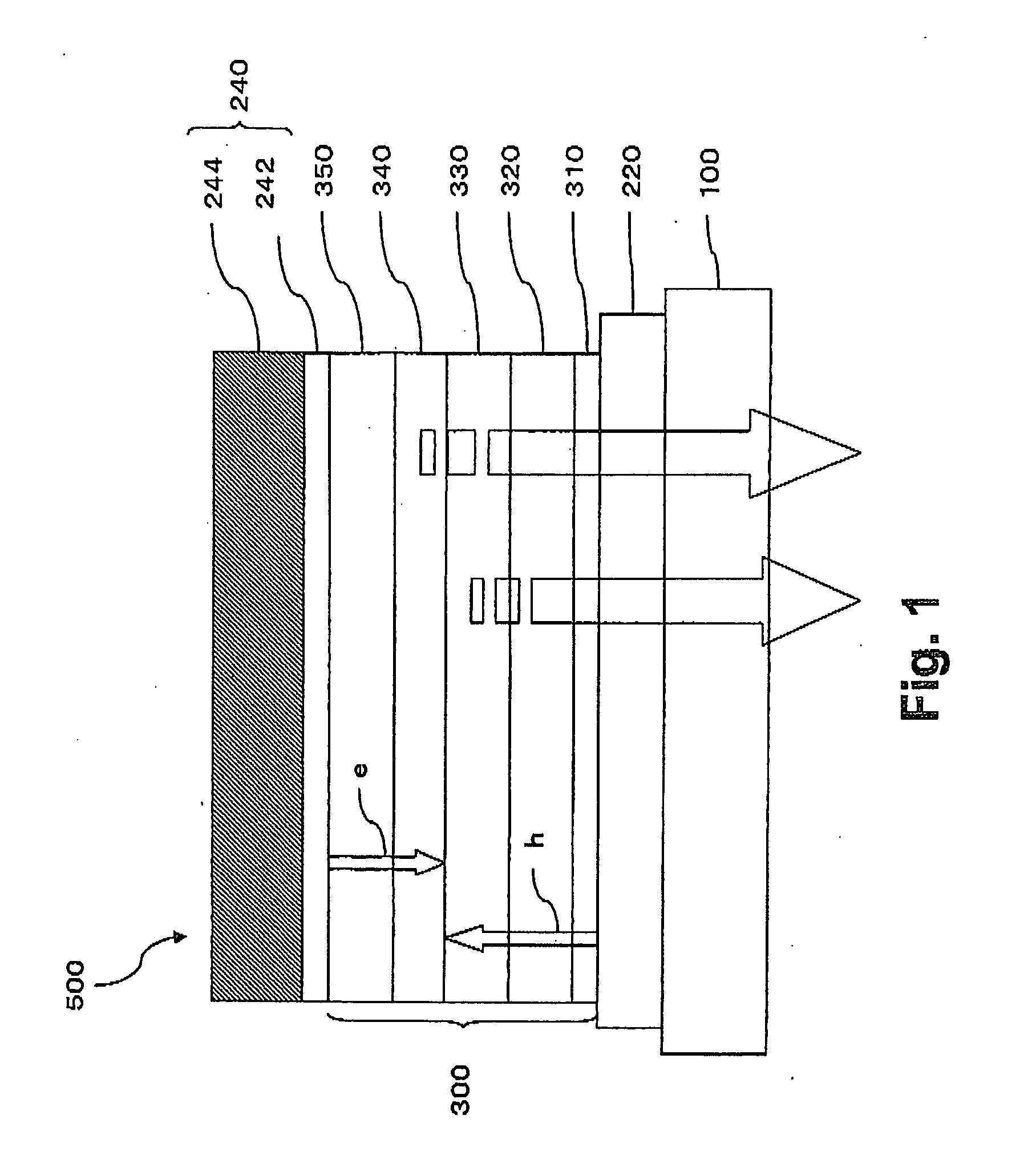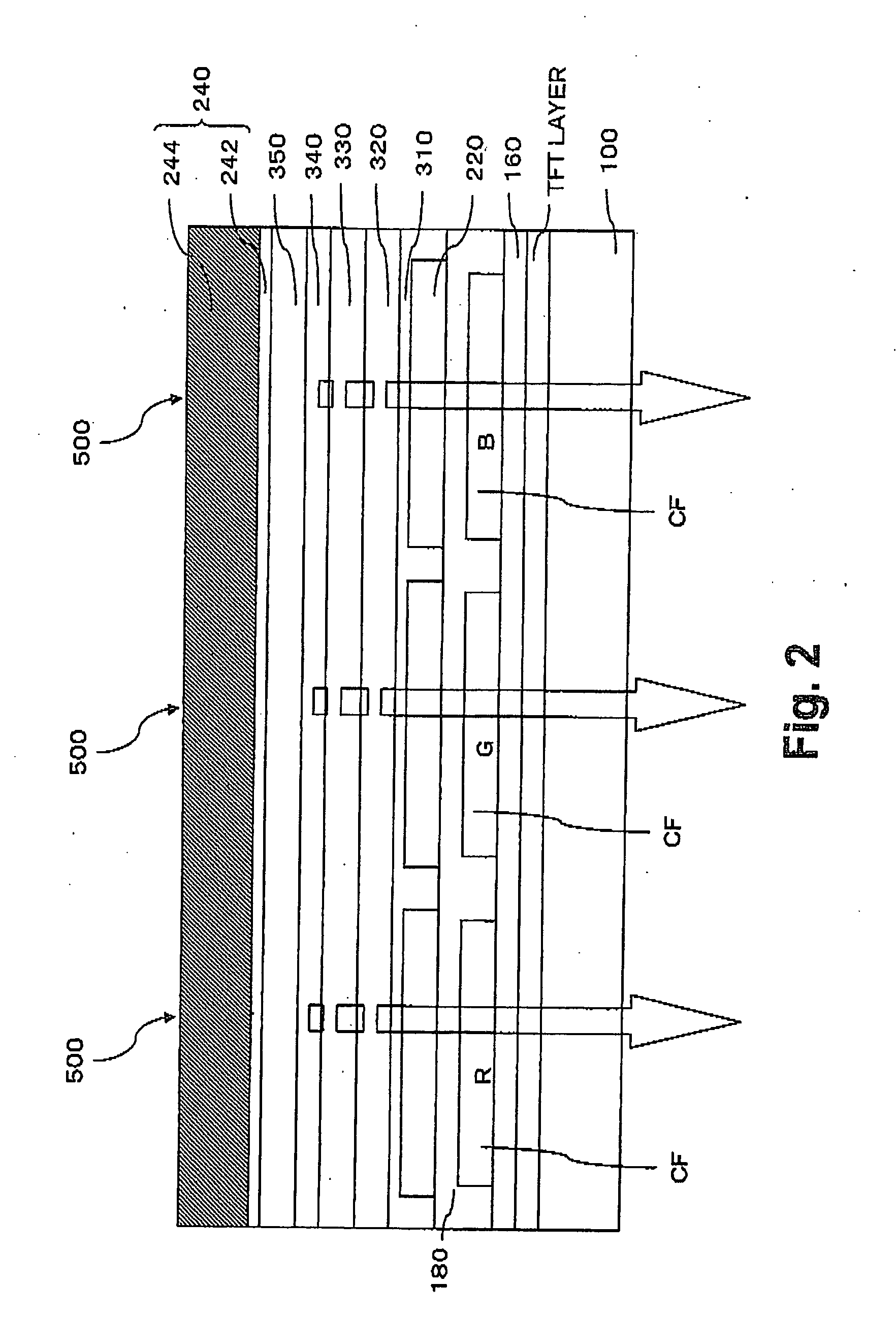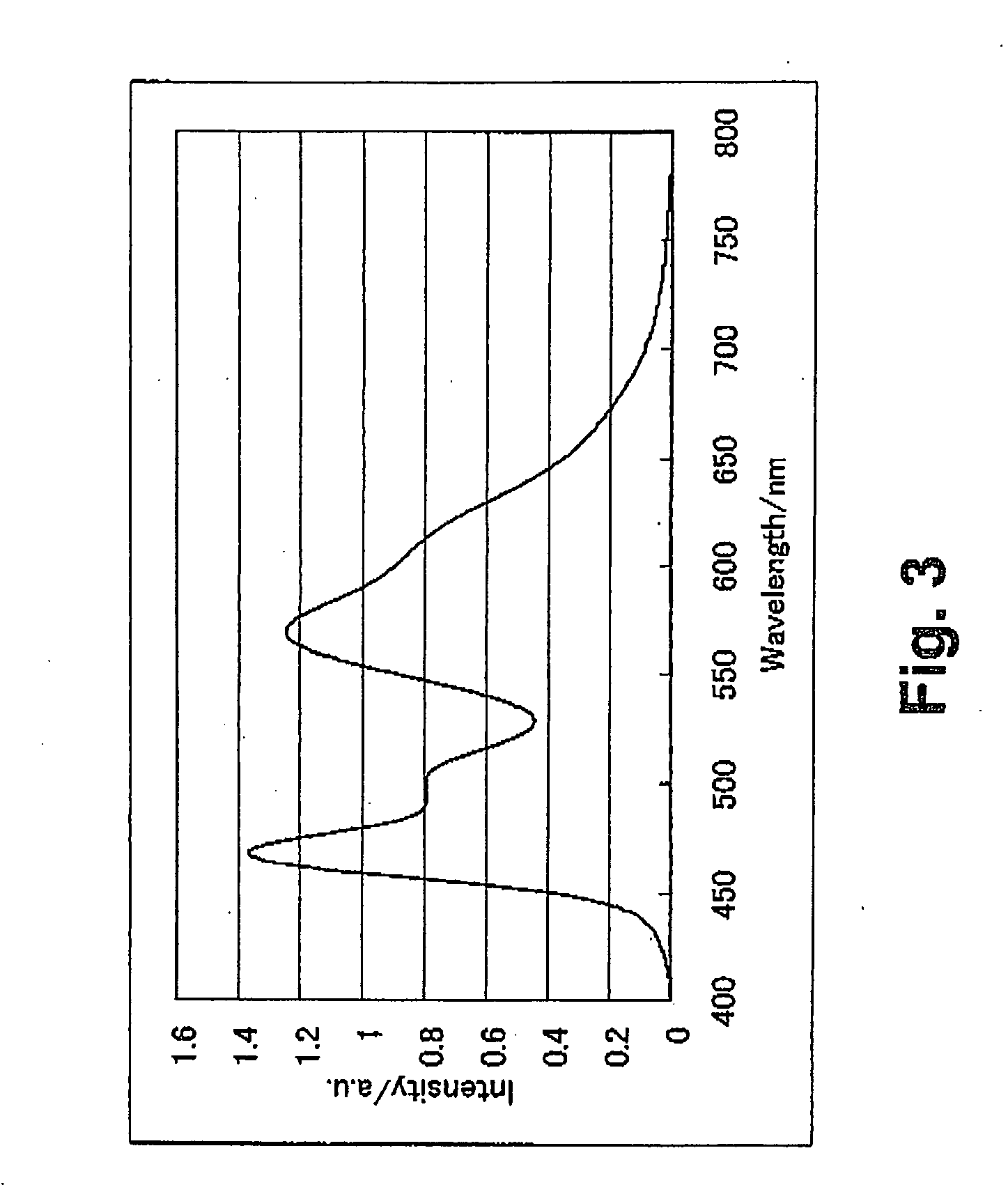Electroluminescence element
a technology of electroluminescence and electroluminescence, which is applied in the direction of discharge tube luminescnet screens, natural mineral layered products, transportation and packaging, etc., can solve the problems of inability to efficiently configure the plurality of emissive layers to efficiently emit light, and the color of the emitted light differs significantly from the reference white color, so as to achieve uniform light emission and improve light emission balance , the effect of easy operation
- Summary
- Abstract
- Description
- Claims
- Application Information
AI Technical Summary
Benefits of technology
Problems solved by technology
Method used
Image
Examples
Embodiment Construction
[0033] A preferred embodiment of the present invention will be described in detail with reference to the drawings. FIG. 1 schematically shows a cross sectional structure of an EL element 500 including a plurality of emissive layers between a first electrode and a second electrode according to the preferred embodiment of the present invention.
[0034] One of the first and second electrodes is a hole injecting electrode (anode) 220 and the other is an electron injecting electrode (cathode) 240. In the example shown in FIG. 1, the anode 220 is formed toward a substrate, and the cathode 240 is formed such that the cathode 240 is opposed to the anode 220 with an emissive element layer 300 including an organic compound interposed between these electrodes.
[0035] The emissive element layer 300 includes a plurality of organic layers containing a hole transporting compound. Further, the emissive element layer 300 includes a plurality of emissive layers. The emissive element layer 300 includes...
PUM
| Property | Measurement | Unit |
|---|---|---|
| thickness | aaaaa | aaaaa |
| thickness | aaaaa | aaaaa |
| thickness | aaaaa | aaaaa |
Abstract
Description
Claims
Application Information
 Login to View More
Login to View More - R&D
- Intellectual Property
- Life Sciences
- Materials
- Tech Scout
- Unparalleled Data Quality
- Higher Quality Content
- 60% Fewer Hallucinations
Browse by: Latest US Patents, China's latest patents, Technical Efficacy Thesaurus, Application Domain, Technology Topic, Popular Technical Reports.
© 2025 PatSnap. All rights reserved.Legal|Privacy policy|Modern Slavery Act Transparency Statement|Sitemap|About US| Contact US: help@patsnap.com



